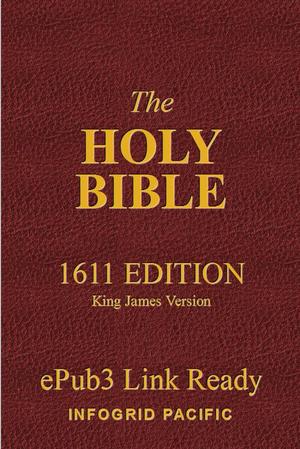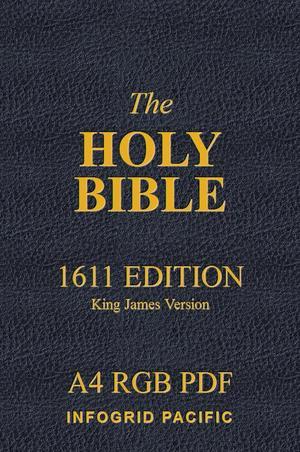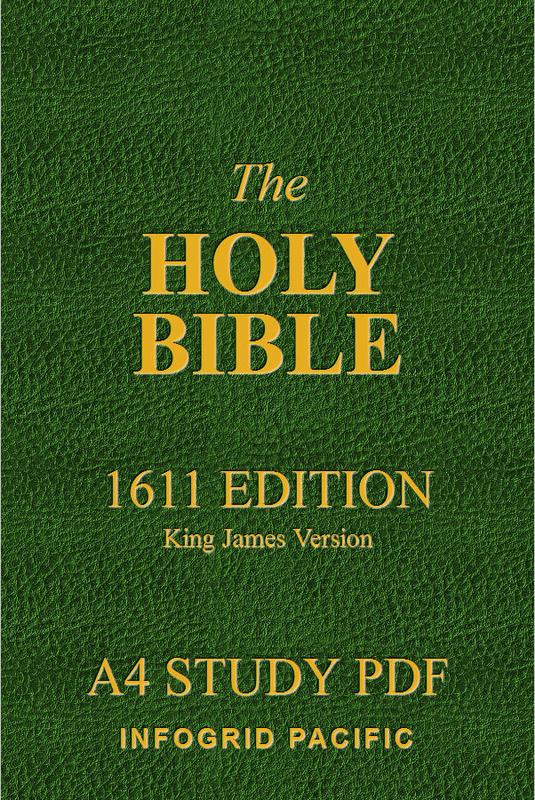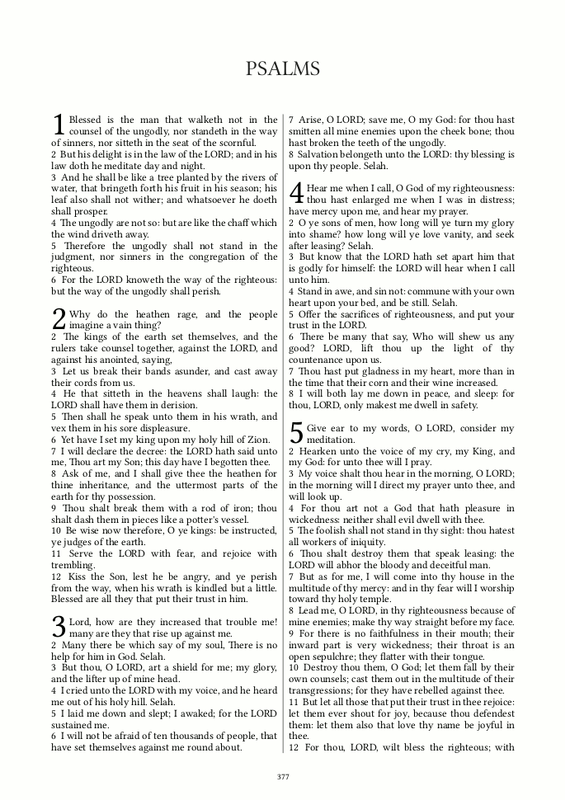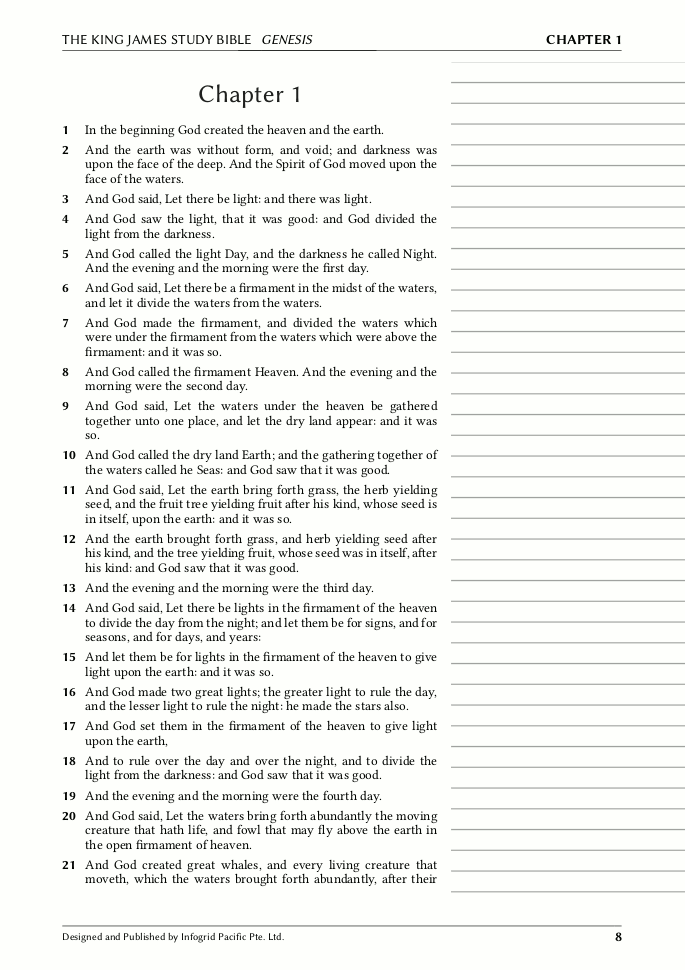The King James Bible Gets Linked
20 December 2013
A client needed to be able to slice and dice the King James Bible (KJB) in many different ways; and generate multiple formats.
A client needed to be able to slice and dice the King James Bible (KJB) in many different ways; and generate multiple formats.
The Requirements
The client needed to be able to do the following:
- Multi-Format Delivery. Package and deliver the complete bible in a wide range of formats for the widest range of platforms and devices. That means: PDF for print, Online PDF, ePub, ePub3, Mobi, PDB (who remembers that!), Doc/DocX and OTF.
- Linked From Documents. Deliver published documents with links to any combination of Book, Chapter and Verse in a document package included the full KJB. This had to be done easily and quickly from multiple language documents.
- Package Processing. Process the packages where references were extracted and moved to the narrative document and could then be view inserted into the document inline, as links or as popups.
- Interactive Navigation. Have an ePub3 widget that allows direct navigation to a verse by selecting Book, Chapter, Verse from a drop-down interface.
- Easy Home Print Study Edition. Produce a study edition that was printable by chapter and also remixable into various combinations of chapters.
There is also a requirement to do this in 180 languages, but that is another story.
Two editions were created to address the core requirements.
KJB By Books. This is the core version used for packaging in multiple formats for multiple devices. This is available here as ePub3/2 Transitional and as an RGB Bookmarked PDF.
KJB By Chapters. A special section-printable study edition was designed and created as well. This was not required as an eBook because the 1,189 entries in TOC were unweildly. This version is also used for the packaging processor when reference verses and verse ranges need to be extracted and inserted into another document.
The Process
A Project Gutenberg KJB was the obvious starting point. This was process imported into IGP:Digital Publisher with the most important verse-linking ID pattern applied during importing.
The ID pattern looks like this:
id="Genesis" (applied to books)
id="Genesis-4" (applied to chapters)
id="Genesis-4-12" (applied to verses)
Notice we kept the links relatively semantic. This makes development of various processing and presentation interactive tools a lot faster and easier; for example creating and using JSON arrays for lookup tools.
Use ePub3 CFIs
We briefly toyed with the idea of using an IDPF Cannonical Fragment Indentifiers (CFI) approach for inter-document linking. We had to drop it as unworkable because most of the link processing is done in format packaging.
We also want the linked content to come to the reader (as inserted, revealed or popup text), not go through a tedious open another document process.
The fact there is no reading systems support was also a consideration. But the real decision maker was the link pattern needed to work with serious widget tools as well. Our IDs are considerably more elegant than XLinks.
The Outputs
The books are maintained in IGP:Digital Publisher and can output any format at any time, including remixed chapters for special editions.
We made the print editions A4 because they are required to be used around the world and need to be easily printed. It is trivial of course to create a US-Letter variant if required but of course the world uses A4! We used Linux Liberation and Linux Biolinium for the typesetting.
KJB Main Print Version
This is a paper-saving layout with chapter numbers as drop- caps and indented verse numbers. Pretty standard approach. The final PDF is 821 pages, so printed double sided it is well less than a ream of paper at 411 sheets.
The Chapter numbers are actually tagged as <h2>Chapter X</h2>. A clever little bit of CSS then converts these to counter generated drop-caps. For those interested in this stuff it looks like this.
.Chapter-rw {counter-reset: ahead;}
.Chapter-rw h2 {
counter-increment: ahead;
visibility: hidden;
margin: 0 0 0 0;
line-height: 12pt;
}
.Chapter-rw h2 + p:before {
content: counter(ahead);
font-weight: normal;
float: left;
font-size: 36pt;
line-height: 24pt;
margin-top: -2pt;
margin-right: 2pt;
}
.Chapter-rw h2 + p .num-verse-rw {display: none;}
.Chapter-rw .title-block-rw + h2 {line-height: 0pt;}
The value of this is that numbered or heading versions can be created with just a little CSS magic.
View a Page Sample
KJB Study Version
This was a little more interesting with well over 2000 pages. Each chapter opens on its own page and has hanging verse numbers for quick scanning access. The running headers also establish the Testament, Book and Chapter context.
There is a notes column on the right hand side. Page numbering starts from 1 in the frontmatter so the PDF sequence number and document sequence number align.
Attention was given to PDF navigation so any chapter can be reached with three clicks. This was easy to create with IGP:Digital Publisher because of the strong TOC generation tools.
- From the Contents page click Old or New Testament;
- from the Testament TOC click the Book,
- and from the Book TOC click the chapter.
Read or print away.
View a Page Sample
ePub3 Version
Other than the fact it is a big book there is nothing startling about the ePub3 version. This could just as easily have been ePub2, but we are pushing the reluctant to move ePub3 wagon right now. It has standard TOC navigation with extra sub-navigation pages for the Old and New Testament.
Note that two of the books give the arcane 300KB ePub2 reader warning.
And In Conclusion
Even the KJB is a good target for a bit of 2013 digital content processing. Of course there are bibles available in apps, online and everywhere and in every language.
What was unique and interesting about this project was the ability to use the KJB dynamically for a very wide range of publishing requirements and keep using it well into the future without having to redevelop anything.
This kind of processing and long-term content maintenance and reuse cannot be done on desktop content production tools because of the way content is treated internally.
The most interesting aspect of this project is the linking, processing and integration of extracts with other books. Fast and easy with IGP:Digital Publisher.
Posted by Richard Pipe
